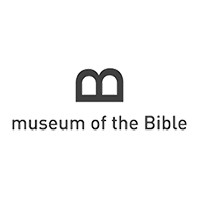WASHINGTON — Museum of the Bible will honor the service and sacrifice of America’s veterans and active-duty military personnel by offering these heroes and their families free admission from Thursday, Nov. 11, through Thursday, Nov. 18. Veterans Day is celebrated annually on Nov. 11.
“Members of the military sacrifice a great deal for our country, so this is our small way of saying thank you,” said Harry Hargrave, CEO of Museum of the Bible. “We hope our visitors, veterans and their loved ones will explore our galleries and be encouraged by how the Bible has historically served as a source of strength and peace in times of trouble.”
The Bible has been a source of comfort and guidance for millions of Americans during times of military conflict, from the frontlines to the home front. Historically, many political and military leaders have referenced the Bible to mobilize the American people and strengthen national resolve. Organizations such as the YMCA and the Gideons distributed millions of Bibles to soldiers. Military chaplains served both the spiritual and physical needs of their units, some even receiving the Medal of Honor for going above and beyond the call of duty.
Museum of the Bible is excited to unveil a new section of its “Bible in America” exhibit called “Service to the Nation” which features:
Vesta O’Donnell’s World War II Pocket New Testament with Psalms. During the Second World War, the Christian organization The Gideons International printed thousands of pocket New Testaments, which included a message from President Franklin D. Roosevelt, the national anthem and military prayers. This copy was given to Vesta Aldora O’Donnell when she enrolled in telegraph school in Omaha, Nebraska. She moved to Washington state after graduation to work as a telegrapher relaying messages from the Pacific Theater.
“Chaplains at War” Comic Book, The Living Bible, Number 3. This comic book shares stories of military chaplains during World War II. It includes the story of the “Immortal Chaplains,” four chaplains who gave their lives saving others when the transport ship, the USAT Dorchester, was torpedoed off Newfoundland. Printed in the book is a word of appreciation to all chaplains, “wherever you are . . . our sincere gratitude for your courage, [and] your selfless devotion to duty.
Jewish Holy Scriptures Presented by the Army of the United States. These pocket Bibles were printed in 1942 for Jewish soldiers and sailors serving in the US Army and US Navy. They contain selections from the Hebrew Bible made by the Jewish Welfare Board, an organization that looked after the needs of Jewish soldiers and chaplains. They include a message from Franklin D. Roosevelt commending the Bible to soldiers “as an aid in attaining the highest aspirations of the human soul.”
In addition to these, the museum will have a variety of military and veterans artifacts on display, including:
Private George Raymond Rome’s portrait, personal New Testament, shoulder sling and cartridge box and belt, buckle, scabbard and percussion cap pouch. Pvt. Rome was one of nearly 180,000 African Americans to fight for the Union Army during the Civil War. Rome was born in 1835 to free African American parents living in Providence, Rhode Island, and later moved to Worcester, Massachusetts. When the Civil War began in 1861, he and other African Americans were initially denied enlistment. However, the U.S. government reversed its policy in 1863, and Rome eventually joined the 55th Massachusetts Infantry Regiment, participating in several campaigns, including Sherman’s famous March to the Sea. He survived the war and died in 1900.
Young Men’s Christian Association (YMCA) American Navy Edition New Testament. The YMCA printed a version of the New Testament for members of the United States Navy during World War I to encourage and strengthen those serving.
Aitken New Testament and Aitken Bible. Robert Aiken, a Scottish immigrant to Philadelphia, printed his New Testament in 1777, breaking Britain’s monopoly on printing English-language Bibles. He later published The Aiken Bible in 1782, which earned the nickname “The Bible of the Revolution.”
The museum also has several military Bibles that are viewable online:
Admiral David Farragut’s Bible. Adm. Farragut was an officer in the United States Navy who served in the War of 1812 and the Mexican-American War (1846-1848). During the Civil War, he fought for the Union and became the first rear admiral, vice admiral and admiral in the Navy. He coined the phrase “full speed ahead” during the Battle of Mobile Bay in 1864.
Rear Admiral Peirce Crosby’s Bible. R.Adm. Crosby’s Bible was given to him by his grandmother when he joined the United States Navy in 1838. He served in the Mexican-American War (1846-1848) and fought for the Union during the Civil War. Later, he served as Assistant Secretary of State.
John Weisenhamer’s German New Testament. This German New Testament was printed in New York by the American Bible Society. While not specifically printed for soldiers during the Civil War, this copy belonged to John Weisenhamer of the 23rd Artillery while at Lincoln General Hospital in Washington, DC. Several leaves in the Bible contain bloodstains. The Lincoln General Hospital opened in December 1862 as a military hospital built by the Army, and it was taken down shortly after the Civil War ended in 1865.
The Soldier’s Pocket Bible. This Bible is a facsimile of one issued to Oliver Cromwell’s soldiers during the English Civil War; it was reissued to American soldiers during World War I. Theodore Roosevelt added a note to some copies: “This is worth reading, comrade and friend.”
Gospel of John, Army and Navy Edition. In 1917, the American Bible Society (ABS) ran a campaign to give a copy of the Gospel of John to every soldier or sailor who desired one. Approximately 6 million copies were printed over the course of America’s involvement in World War I.
Glenn Simpson — World War II Heart Shield Bible and Major Charles Hearn — Heart Shield Bible. During World War II, many American soldiers were issued New Testaments; some came with a metal cover. Because they were often carried in shirt pockets, they are known as “Heart Shield Bibles.” The Heart Shield Bibles were a durable edition made for the battlefield — and a source of encouragement for many GIs. Glenn Simpson received this Bible from his wife as he entered the United States Naval Training Center in Sampson, New York, in October 1943. It was passed down to their son, Glenn Simpson Jr., who also served in the military until his discharge in 1965. Major Charles A. Hearn was given this Bible by Lottie Bille. Accompanying this Bible is also an identification card for Major Hearn signed by the issuing officer, John Rostic, Major CMP.
World War II Army New Testament signed by Babe Ruth. This New Testament was printed for Army Protestant personnel by the United States Government Printing Office in 1942. Printed with the Bible is a preface dated March 6, 1941, by President Franklin D. Roosevelt, “commending the reading of the Bible to all who serve in the armed forces of the United States.” This copy includes the signature of Babe Ruth from 1942 on the front endpapers. Ruth made many personal appearances supporting the war effort during World War II until his last appearance as a player at Yankee Stadium in 1943.
More military Bibles and artifacts are available for online viewing here.
Museum of the Bible tickets can be reserved here. A valid military ID must be presented at the ticket counter for free admission. Accompanying guests of veterans and active-duty service members who are eligible for free admission must present a dependent ID card.
More information on Museum of the Bible is available here.

